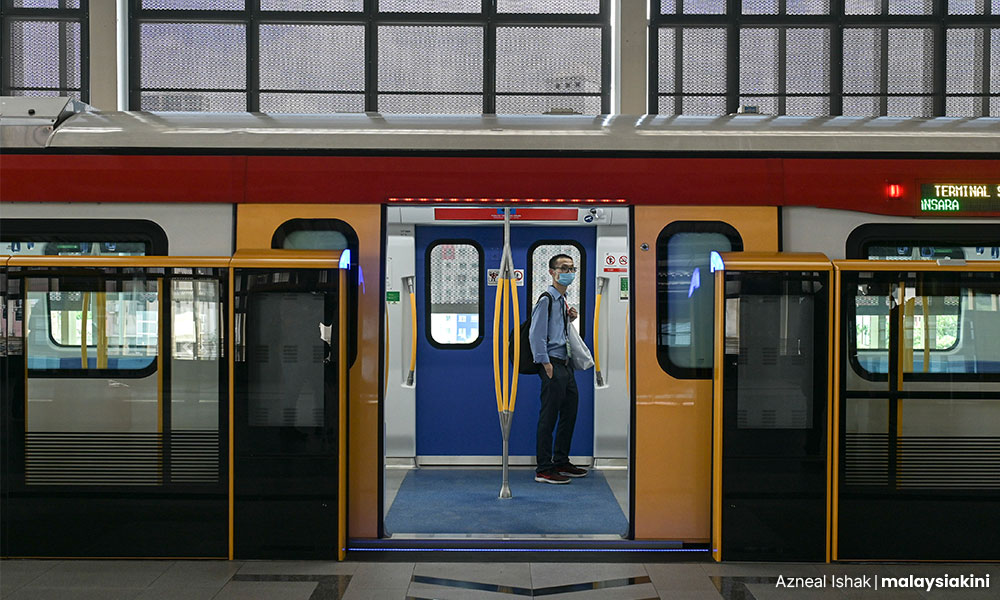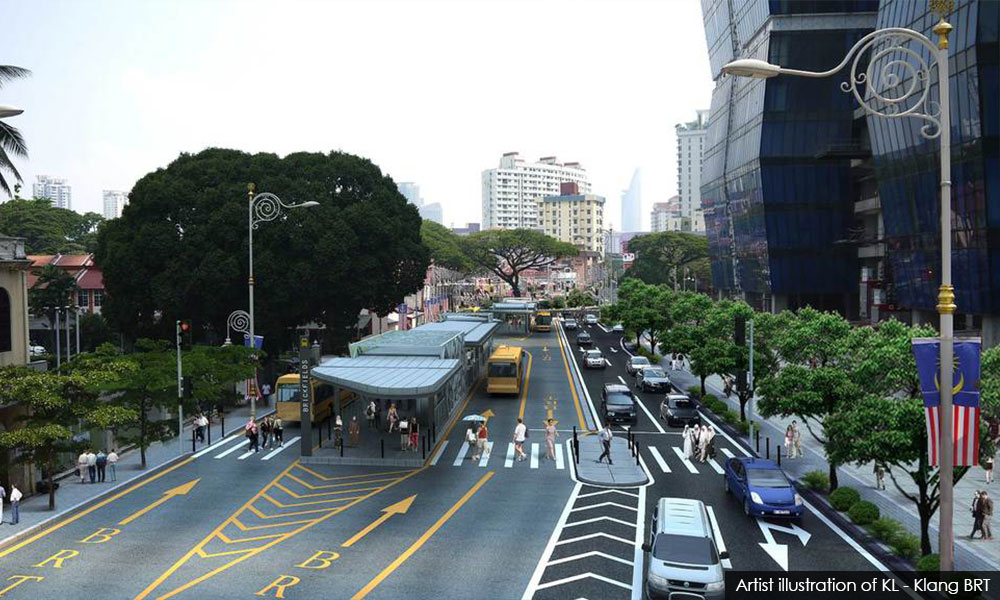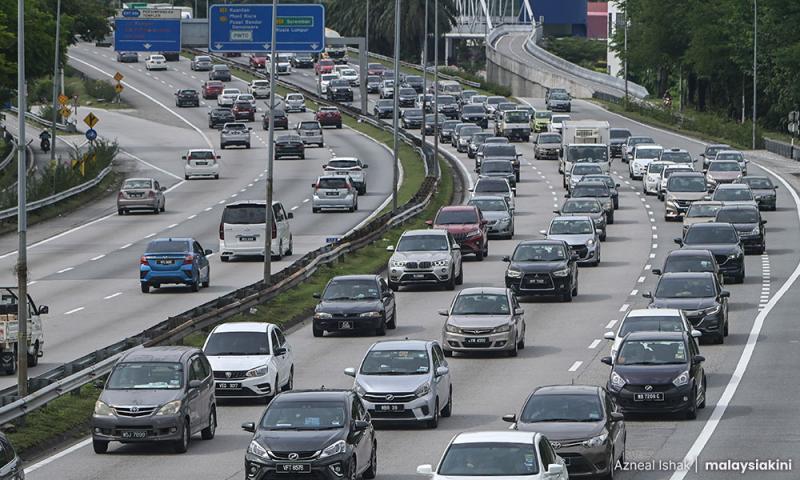LETTER | Unlocking traffic grid for better mobility
LETTER | Numerous viable alternatives to private vehicles, such as public transit, cycling infrastructure and walking paths, form alternative modes of transportation to help alleviate road congestion.
Despite the government's allocation of RM6.08 billion, which accounts for 1.6 percent of the 2023 Budget, there are still pressing issues shrouding the effectiveness of public transport systems in this country.
For instance, the poor condition of pedestrian walkways and bicycle lanes makes it difficult for members of society to choose walking or cycling as viable options for their daily commute.
Inadequate infrastructure, lack of maintenance and limited connectivity hinder the seamless flow of pedestrians and cyclists, thus, discouraging their usage.
Moreover, these sidewalks often suffer from poor maintenance and insufficient infrastructure like ramps, bollards and dedicated bike lanes.
Additionally, street vendors and parked vehicles' encroachment hinders the mobility and safety of pedestrians and cyclists.
Despite introducing e-scooters in Malaysia, their usage has not reached the expected level due to various factors, including the lack of dedicated lanes, safe riding spaces, charging stations, designated parking areas and limited coverage areas.
Former Transport Minister Wee Ka Siong explained that this facility could not be used on public roads as it could put road users at risk.
A significant issue road users raise is the considerable distance between public transit stations and residential areas, making walking impractical and inconvenient.
Consequently, individuals must depend on e-hailing services like Grab to commute from transit stations to their homes.
Unfortunately, this reliance on ride-hailing services indirectly escalates travel costs, exacerbating their financial burden.

Public transport burden
The public transport systems in Malaysia are suffering from problems such as frequent breakdowns, delays and overcrowding.
For example, the Kelana Jaya LRT line recently experienced two technical problems in less than two weeks, leading to trains stopping longer at several stations.
Discontinuation of LRT service at six stations on the Ampang/Sri Petaling Line over safety concerns due to structural damage near the Bandaraya LRT Station only discouraged the shift from private vehicles to public transportation.
To assist the affected passengers, free bus services were provided. However, this change only results in longer transit times despite the availability of alternative transportation options.
Although apps like Moovit, which aim to provide accurate and real-time information about public transportation, are available, these apps face challenges in ensuring their data's accuracy and timeliness.
This could sometimes create confusion and frustration for users who rely on these apps for timely transportation information.
Addressing shortcomings
Therefore, the government must address these shortcomings by improving the condition and connectivity of pedestrian walkways and bicycle lanes and enhancing the coverage and reliability of other public transportation systems.
This recommendation is aligned with the National Transportation Policy 2019-2030 and the Road Safety Plan 2022-2030, which aim to encourage the usage of public transportation as the preferred mode among Malaysians.
It is necessary to design a human-scale city that allows people to easily reach their desired destinations, such as schools, workplaces, parks, shops and restaurants, by walking or cycling instead of relying on motorised transportation.
One notable example is the concept of Housing and Development Board (HDB) estates in Singapore, where residential areas are designed with a range of amenities such as schools, workplaces, parks, shops and restaurants, typically within a few minutes of walking distance from each other.
HDB estates are typically well-equipped with well-connected pedestrian walkways and cycling paths, enabling residents to conveniently access their desired destinations without relying too much on motorised transportation.
Implementing efficient scheduling, improving maintenance practices, and utilising technologies like real-time tracking for our future public transportation systems are crucial.
These initiatives will instil confidence in commuters and encourage more significant usage of public transport.

Implementing BRT
The proposal to implement (BRT) in Malaysia has the potential to significantly improve the efficiency and sustainability of the country's public transportation systems.
BRT has proven successful in various cities worldwide, offering a cost-effective and flexible solution to urban transportation challenges.
For example, Jakarta's TransJakarta BRT system, one of the largest in the world, serves millions of passengers daily and helps alleviate traffic congestion while improving public transportation options.
To enhance bike lanes in Malaysia, it is crucial to prioritise the construction of dedicated bike lanes separated from motor vehicle traffic and measures such as bollards, barriers or raised curbs to ensure cyclists' safety and comfort.
The government should also focus on establishing a well-connected network of bike lanes across different cities to ensure continuous routes with minimal interruptions.
Integrating the bike lanes with existing cycling infrastructure, including bike-sharing programs and bike parking facilities, will provide cyclists with a seamless experience.
Creating a comprehensive and efficient transportation network that encourages public transportation contributes to reducing dependency on private vehicles and achieving the Sustainable Development Goals (SDGs) 11.
This, in turn, provides safe, affordable and accessible transport systems for all.
By improving and expanding the systems for efficiency and professional services, cities can enhance accessibility, reduce dependency on private vehicles, promote sustainability and improve road safety.
This will foster inclusive and sustainable urban development and ensure everyone has equal access to essential services, opportunities and a safer and ideal transportation experience.
CHIENG CHUI CHEE is Research Analyst at Institut Masa Depan Malaysia.
The views expressed here are those of the author/contributor and do not necessarily represent the views of Malaysiakini.
RM12.50 / month
- Unlimited access to award-winning journalism
- Comment and share your opinions on all our articles
- Gift interesting stories to your friends
- Tax deductable
